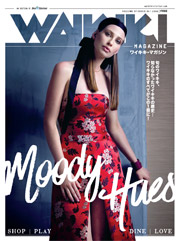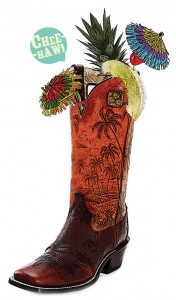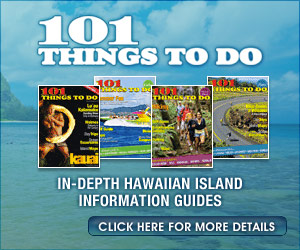The Cowboy Way
Gather ’round, lil’ doggies, and listen to a tale of a time way back, back when paniolo roamed the Hawaiian landscape. But first, to understand the true impact the Hawaiian cowboy made when he first rode into town, we have to start at the beginning.
When Polynesians discovered the Hawaiian Islands more than a dozen centuries ago, there were no large land mammals to speak of—no cows, horses, pigs or sheep. These early settlers did bring with them some pigs, as well as chickens and dogs, but other than that, Hawai’i had no indigenous game.
The first herd of cattle was introduced to the islands by British sea captain George Vancouver in 1793 as a gift to King Kamehameha I. A great kapu (protection, taboo) was placed upon the animals, and soon there were tens of thousands heads of cattle freely wandering the Hawaiian countryside, from the Big Island to Kaua’i.
These wild cattle quickly became a nuisance. Herds would destroy native crops or eat away at thatched homes, while wild bull or cows—some weighing up to 1,500 pounds with a 6-foot horn spread—were known to attack and sometimes kill people.
By the time King Kamehameha III came into power in 1824, something had to be done. In 1830, after the kapu was lifted, the first vaquero came to Hawai’i from California to teach Hawaiians how to manage and market the herds. Locals readily embraced these cowboys and their rich traditions of music, culture, family values and hard work. They even created their own word for cowboy, paniolo, coined from the word “espanol,” as Spanish was the only language the Mexican cowboys spoke.
Hawaiian paniolo were quick studies in the saddle and soon were great horsemen, rustlin’ and wranglin’ some 40 years before the cowboys of the American “Wild West.”
In fact, Hawaiians Ikua Purdy, Eben “Rawhide Ben” Low and Archie Ka’aua made headlines in 1908 when they took home the top awards at the famed World Roping Championship in Cheyenne, Wyo., with the local newspaper of the day reporting that their performances “took the breath of the American cowboys.”
Today, paniolo continue to live “the cowboy way” at ranches throughout the state, including at the legendary Parker Ranch on Hawai’i Island and Kualoa Ranch on O’ahu.
Those looking to put a little paniolo panache in their wardrobe can rustle up a pair of rootin’-tootin’ boots or authentic Stetson at Western Classics (Royal Hawaiian Center, 2201 Kalakaua Ave., Ste. C-309; [C:8 Waikiki Map]; 808-923-1294), Waikiki’s premier Western store. With exclusive name-brand apparel, footwear and accessories from Tony Lama Boots, Minnetonka Moccasins, White’s Boots, Stetson and Rockmount Ranch Wear, this shop also carries a large selection of authentic Native American jewelry made by Hopi, Zuni and Navajo artists.
If subtlety is more your thing, you can never go wrong with a good ol’ pair of denim from Lucky Brand (2113 Kalakaua Ave., Stes. 103/104; [C:6 Waikiki Map]; 808-922-2900) or some rugged leather goods from FOSSIL (2113 Kalakaua Ave., Ste. 101; [C:6 Waikiki Map]; 808-924-4044) and Pipeline Leather (Royal Hawaiian Center, 131 Kaiulani Ave., Ste. 2; [C:8 Waikiki Map]; 808-926-6888).
And those looking to party, cowboy-style, can mosey over to Nashville’s Waikiki (2330 Kuhio Ave.; [B:8 Waikiki Map]; www.nashvillewaikiki.com). Branded as Hawa’i’s only real country western tavern, this genuine saloon features “down-home recipes” like Lynchburg Lemonade, Georgia Peach Tea and AMF (a mix of vodka, gin, light rum, white tequila, triple sec and blue curacao with sour mix and a splash of 7-Up), along with loads of fun going on every night of the week, including darts, pool tournaments, black jack and free lessons in line dancing and two-step.
So get along, lil doggies, and find yourselves some cowboy-sized adventures here in Hawai’i. Yee-haw!










